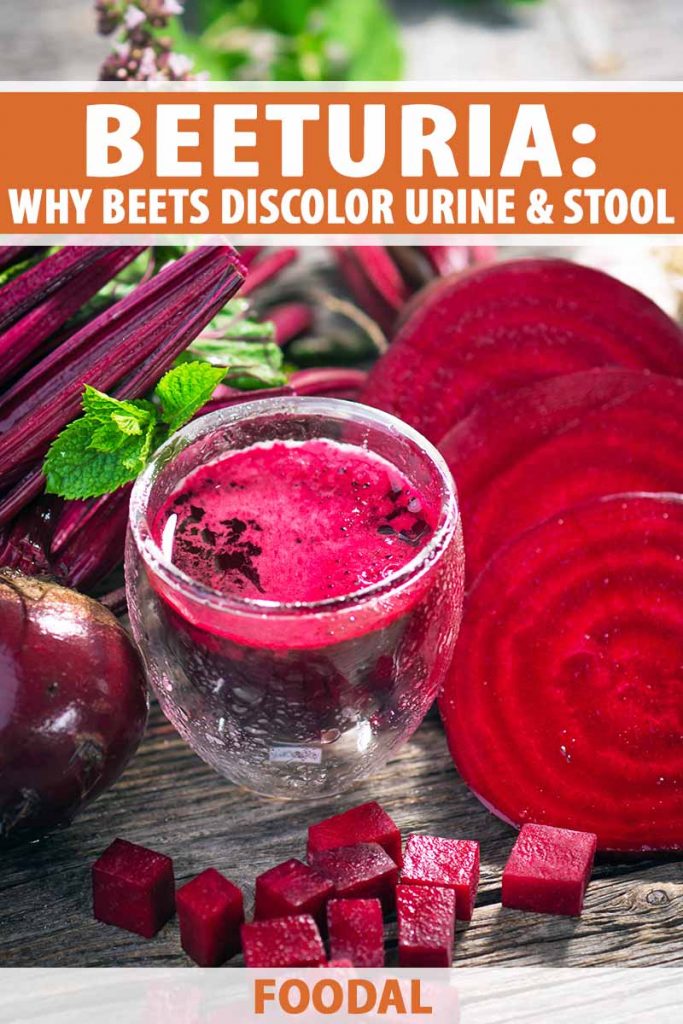Well, folks, if anyone is going to tell you about this, it’s no surprise it’s me, since I also ate carrots and turned orange.
I’m here to tell you about another colorful vegetable phenomenon, beeturia. And awkward as it is to talk about, it’s real and potentially frightening unless you understand what’s happening.
Let me tell you what happened to me.
One morning I was in an airport preparing to board a flight home from a vacation. Nature called, and I dashed to the restroom, where I noticed a disturbing discoloration. Sure that I was doomed, I put on a brave face for my family and tried not to panic.
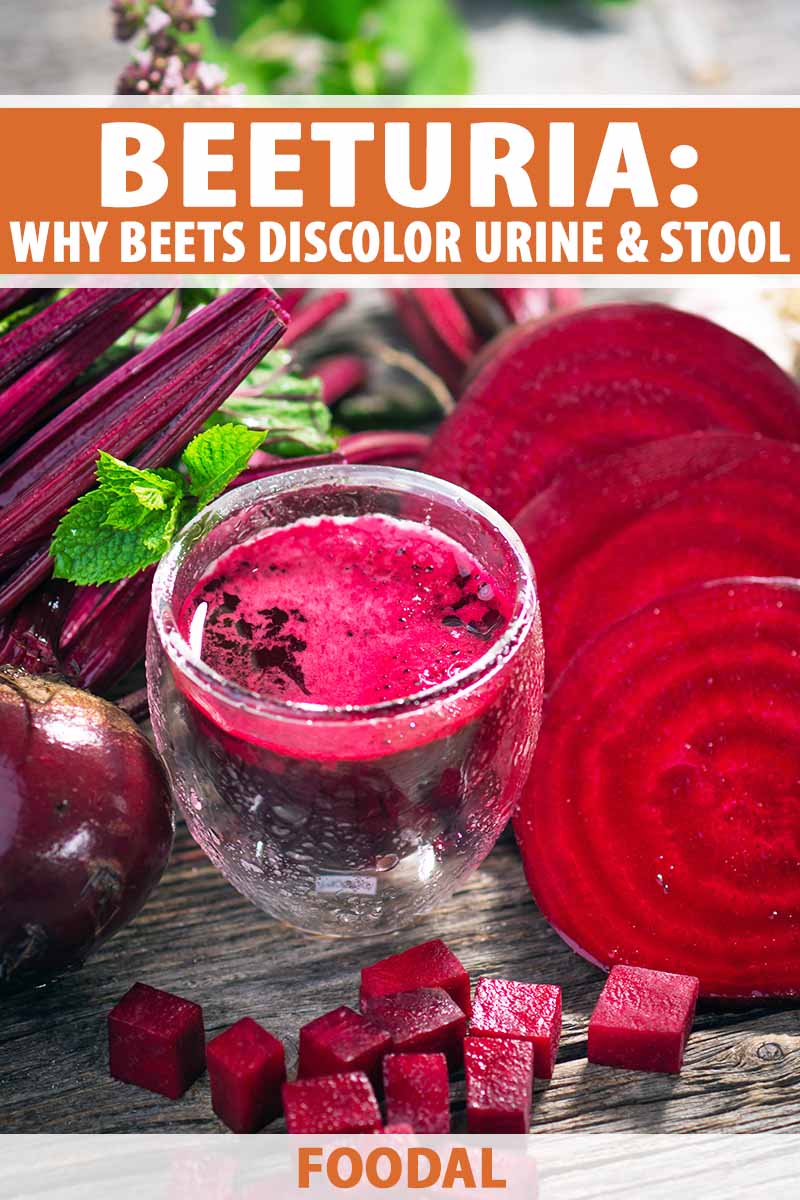
Then it dawned on me – could it be the generous helping of my favorite red root veggie I had eaten the night before?
Read on for a discussion of this bodily embarassment, so if it happens to you, you’ll be calmer than I was.
Here’s what we’ll cover:
What You’ll Learn
After my experience, I was fascinated to learn the following.
Beets Are Healthy Root Vegetables
Beets, aka beetroot, are vegetables with edible roots and foliage. Colors vary and include gold, pink, purple, red, white, and yellow skins with matching flesh, as well as pink or red with red and white stripes inside.
Nutritionally, varieties of all colors are rich in B vitamins, copper, iron, magnesium, manganese, and potassium.
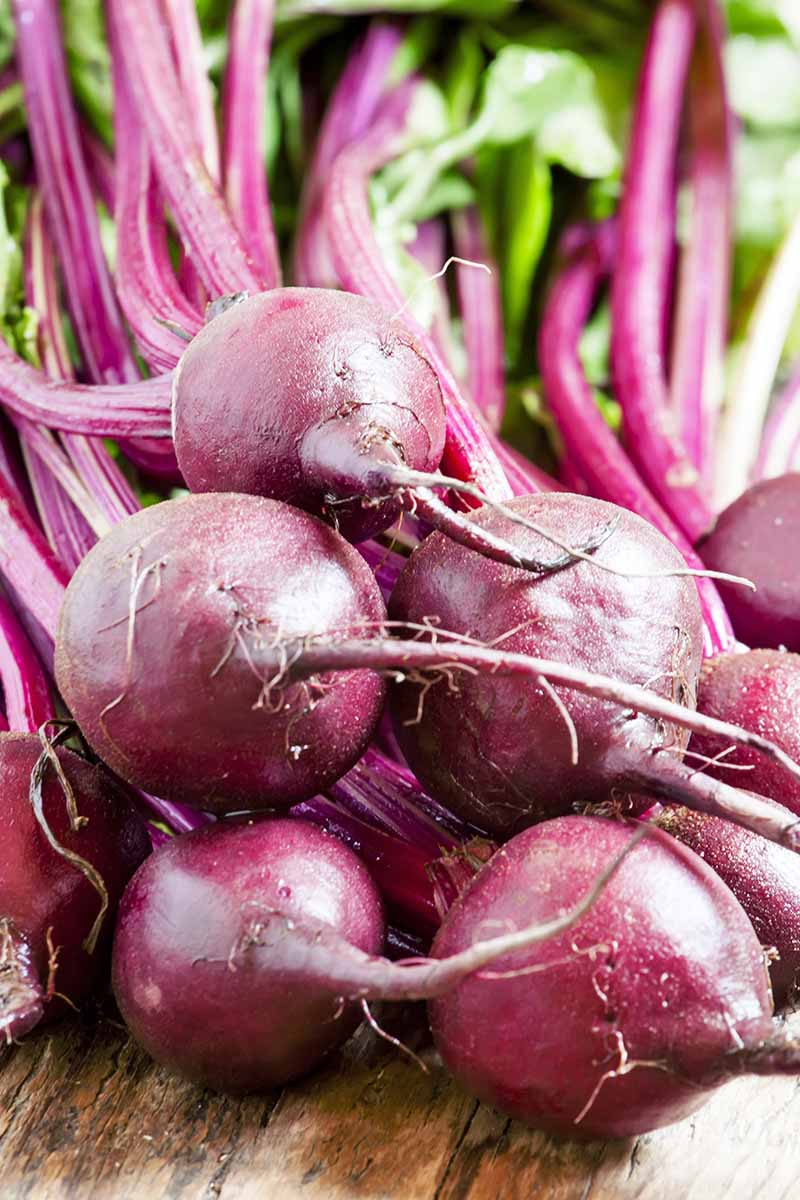
The rich colors come from pigments called “betalains.” There are red-violet betalains called betacyanins and yellow betalains called betaxanthins. Both pigments have anti-cancer, anti-cognitive impairment, anti-hepatitis, anti-inflammatory, anti-malarial, and anti-microbial properties.
White varieties contain no betalains, hence their lack of color.
Yellow types have high concentrations of betaxanthins.
Red and purple ones contain high concentrations of betacyanins. They also contain a type of betalain called betanin that is extracted and used as “beetroot red” food dye. These are the vegetables responsible for beeturia.
What Is Beeturia?
The term refers to a reaction to consuming the red and purple root vegetables that affects 10 to 14 percent of the population. For those who experience it, the red betacyanin pigments usually broken down in the digestive tract are instead excreted in urine or stool, causing it to appear pink to dark red.
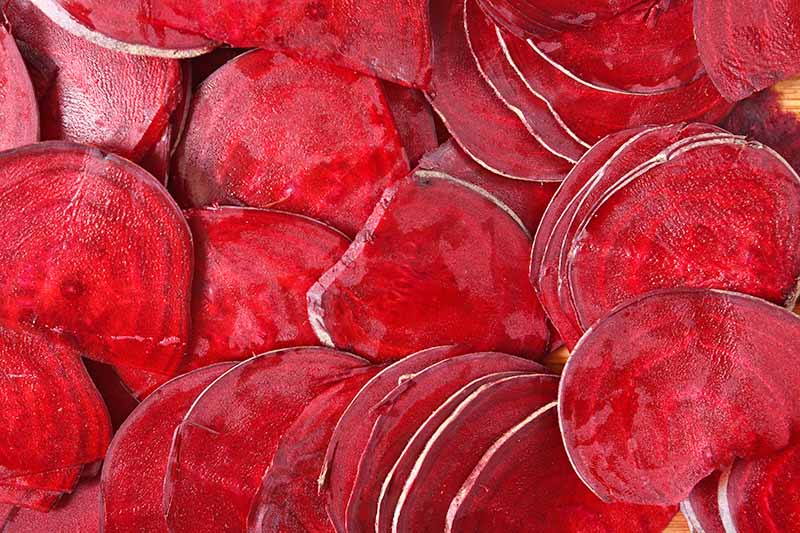
It is not widely studied, but there are numerous theories about the failure to properly digest betacyanins, including:
- Allergy
- Iron Deficiency
- Low Stomach Acid
- Malabsorptive Disease
In the airport on that scary day, I was fortunate to make the connection between the pinkish tint and having enjoyed a healthy helping of my favorite red root veggie the night before. And because I have celiac, a malabsorptive disease, I now understand that was the likely culprit. Interestingly, I continue to eat them and it hasn’t happened again.
I share this with you because urine or stool discoloration is often upsetting and may indicate an underlying health condition of which you may be unaware.
In and of itself, it is simply a benign occurrence that resolves when the digestive process is complete. No treatment is required.
Vibrant and Versatile Eats
Unless a doctor tells you otherwise, you are free to enjoy hearty and flavorful red and purple roots in many ways, including boiled and buttered, juiced, julienned in salads, and in hot and cold soups. Their bright color is an attractive and healthy addition to the table.
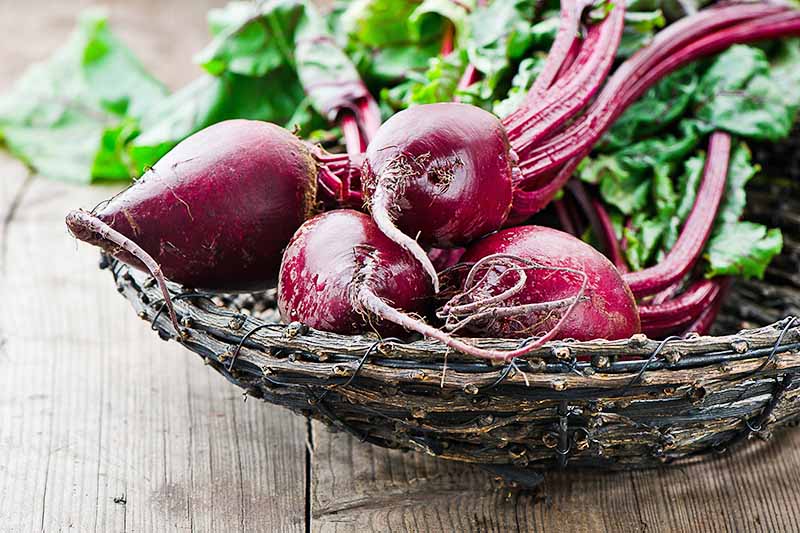
Try super simple and roasted roots for a go-to side dish with only one ingredient and natural goodness that speaks for itself. Find the recipe now on Foodal.
How about homemade quick pickles with turnips? Cool and crisp, bay leaf, chili pepper, and garlic lend a zesty zing. You’ll find the recipe here.
And I know you’ll enjoy a warm, comforting bowl of roasted creamy goodness imbued with the richness of butter and shallots. This delicious homemade soup recipe is also available on Foodal.
Use the tender young foliage as a fresh change of pace from lettuce. The older, tougher leaves make a healthy addition to slow-cooked dishes like hearty soups and stews.
To store, leave two inches of the “tail” of the stem attached to prevent color bleeding, and place the roots in a plastic bag in the refrigerator for up to 10 days.
To freeze, boil or steam until fork tender. Cool rapidly in ice water, dry, and discard the stems and slender taproots. Store cubed, sliced, or whole in a single layer in a zippered plastic bag for up to one year.
If That Doesn’t Beet All!
I was relieved when I realized my restroom issue was not a cause for alarm. If it happens to you, remember to check with the doctor in case something’s brewing, but don’t panic. Beeturia is not harmful and quickly resolves without intervention.
It’s time to make a variety of root vegetables a healthy part of your culinary regimen.
Or why not grow your own with instructions from our sister site, Gardener’s Path?
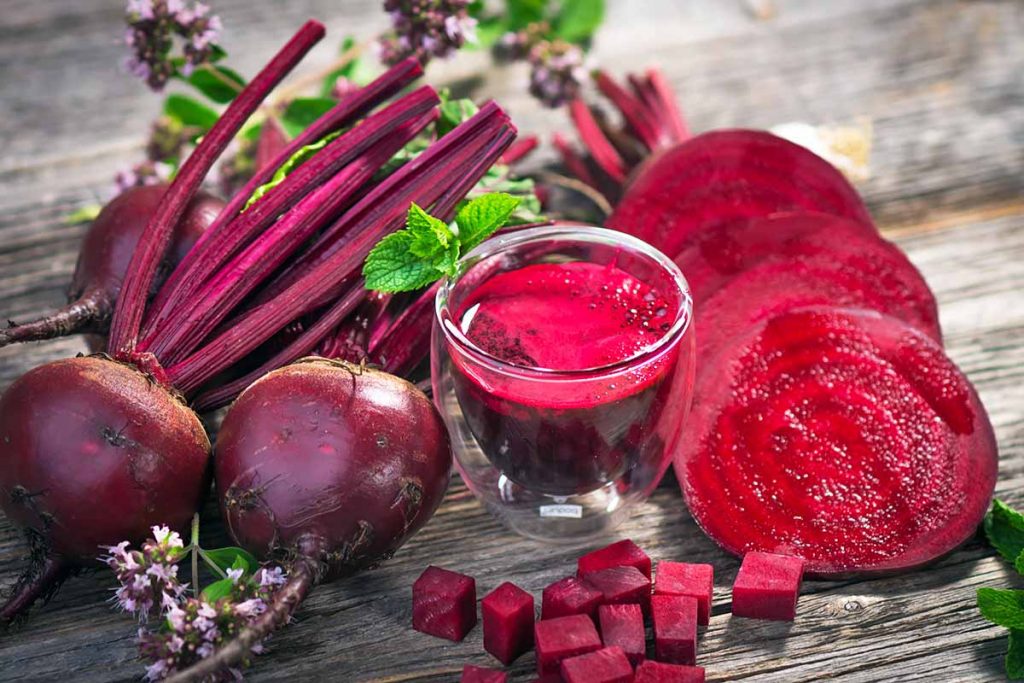
Have you experienced this weird, yet completely harmless, reaction? Would you like to share your story in the comments section below?
If you found this guide informative and want to learn about more various phenomena related to real foods, we recommend the following:
About Nan Schiller
Nan Schiller is a writer from southeastern Pennsylvania. When she’s not in the garden, she’s in the kitchen preparing imaginative gluten- and dairy-free meals. With a background in business, writing, editing, and photography, Nan writes humorous and informative articles on gardening, food, parenting, and real estate topics. Having celiac disease has only served to inspire her to continue to explore creative ways to provide her family with nutritious locally-sourced food.

